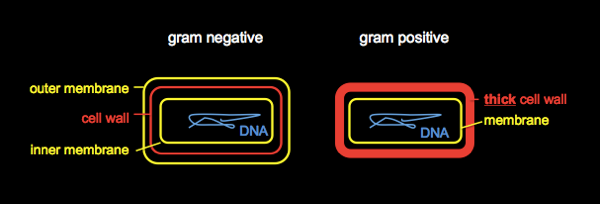
They are one of the first life forms to exist on Earth and have been around for approximately three billion years. Public Engagement and Patient Support (PEPS) Committeeīacteria are very small (usually single-cell) organisms.Antibiotic resistance in the environment.Antibiotic resistant bacteria in healthcare.10.1016/j.cell.2006.01.034īianchi ME: DAMPs, PAMPs and alarmins: all we need to know about danger. EMBO Rep 2006, 7: 774-778.įinlay BB, McFadden G: Anti-immunology: evasion of the host immune system by bacterial and viral pathogens. Harris HE, Raucci A: Alarmin(g) news about danger: workshop on innate danger signals and HMGB1. Oppenheim JJ, Yang D: Alarmins: chemotactic activators of immune responses. 10.1378/chest.1Ĭastelli GP, Pognani C, Meisner M, Stuani A, Bellomi D, Sgarbi L: Procalcitonin and C-reactive protein during systemic inflammatory response syndrome, sepsis and organ dysfunction. Lobo SM, Lobo FR, Bota DP, Lopes-Ferreira F, Soliman HM, Melot C, Vincent JL: C-reactive protein levels correlate with mortality and organ failure in critically ill patients. Povoa P, Almeida E, Moreira P, Fernandes A, Mealha R, Aragao A, Sabino H: C-reactive protein as an indicator of sepsis. Matson A, Soni N, Sheldon J: C-reactive protein as a diagnostic test of sepsis in the critically ill. 10.1023/A:1009878726176ĭinarello CA: Proinflammatory and anti-inflammatory cytokines as mediators in the pathogenesis of septic shock. Panacek EA, Kaul M: IL-6 as a marker of excessive TNF-α activity in sepsis. Plasma IL-1 beta and IL-6 levels are consistent and efficient predictors of outcome over time. Meduri GU, Headley S, Kohler G, Stentz F, Tolley E, Umberger R, Leeper K: Persistent elevation of inflammatory cytokines predicts a poor outcome in ARDS. 10.1146/annurev.pathol.1.110304.100200ĭamas P, Canivet JL, de Groote D, Vrindts Y, Albert A, Franchimont P, Lamy M: Sepsis and serum cytokine concentrations. Munford RS: Severe sepsis and septic shock: the role of gram-negative bacteremia. Future research exploring new biomarkers and danger signals and further characterizing differences in the virulence mechanisms between Gram-negative and Gram-positive bacteria appears promising and could lead to new therapeutics and to improved clinical outcomes.Ībe R, Oda S, Sadahiro T, Nakamura M, Hirayama Y, Tateishi Y, Shinozaki K, Hirasawa H: Gram-negative bacteremia induces greater magnitude of inflammatory response than Gram-positive bacteremia. These observations suggest a distinct immunopathophysiologic behavior of sepsis in patients with Gram-negative bacteremia that may influence clinical outcomes. In this study, C-reactive protein and IL-6 levels were significantly higher in Gram-negative bacteremia than in Gram-positive bacteremia.

In the previous issue of Critical Care, Abe and colleagues report results of a retrospective study that show a significantly higher incidence of Gram-negative bacteremia among adult intensive care unit patients with septic shock than in those with sepsis or severe sepsis. Gram-negative bacteremia has been associated with severe sepsis, although the exact mechanism and pathophysiological differences among bacterial species are not well understood.


 0 kommentar(er)
0 kommentar(er)
